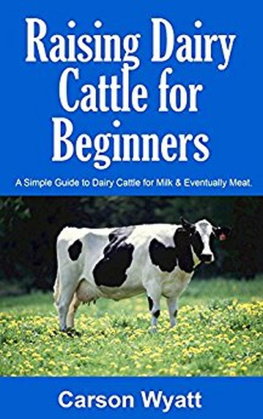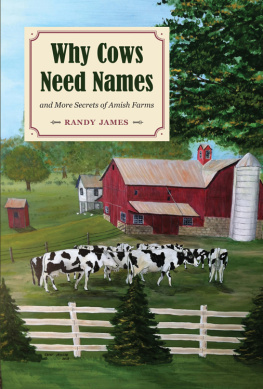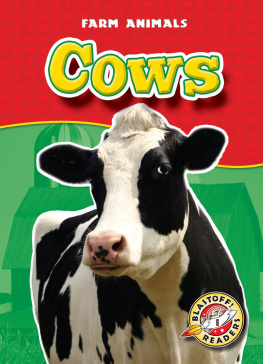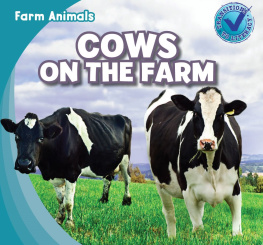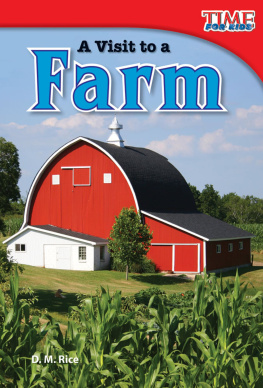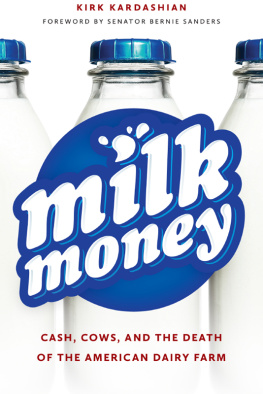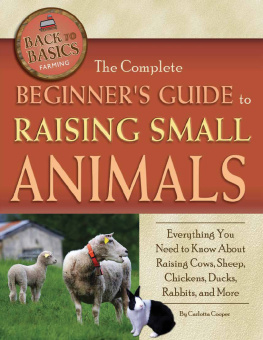As a photojournalist, Im a little embarrassed to admit that sometimes I just drive around and look for pictures. And that is how this project began.
I was assigned to find a picture for the local page of the next days newspaper. None of the stories planned for that day were visual stories, and my mission was to come up with a picture that would stand on its own and carry the page. In the news business, we call these pictures wild art or stand-alone features. If the picture isnt great, its nothing more than filler for the page and a waste of time for readers. Finding these compelling pictures can take hours. Some photojournalists are artists at creating stand-alone features. Others hate the investment of time they require. On any given day, you will find me somewhere in between.
Almost without fail, when I draw these assignments I go to the country. I try the small towns and the back roads. I may feel like Ive seen it all in Madisonor most of it, anywaybut I havent yet seen it all in Ashton or Dane or Lodi or Pine Bluff. And that is how I happened to be making a right turn onto Valley Spring Road on a sunny afternoon in August of 2009. It was nearly fourwhich I would learn the following year was milking time.
And there it was, in a hillside field. What I saw that day was something familiar to me from my youth. It was a parade of sortsa long parade of machinery. At the front was a tractor pulling a hay baler, which was launching oblong bales through the air and into a wagon being pulled behind. I parked at the edge of the hayfield. I wouldnt have much time. The baler was advancing steadily on the few remaining windrows of hay. The late afternoon light transformed the scene to golden, rosy hues, revealing every detail.
I may have waved to the man driving the tractor. I dont remember. Either way, he went on doing his work as I did mine. When he had finished baling up the last of the rows, we talked. He wore a dusty cap, a ragged plaid shirt. He had clear eyes and an easy, wide smile. This was his and his brothers land, he told me. The farm was over the hill, and they had been farming it since they were mere boys working with their parents. Now they lived there with their mother.
That got my attention. The man looked to be around sixty years old. Two brothers and their mother, working a small dairy farm together just as they had been doing every day, all of their lives. I heard myself ask on the spot if I could come to their farm and spend some time photographing them. Come any time, he said with that wide smile. And he went home to milk cows with his brother.
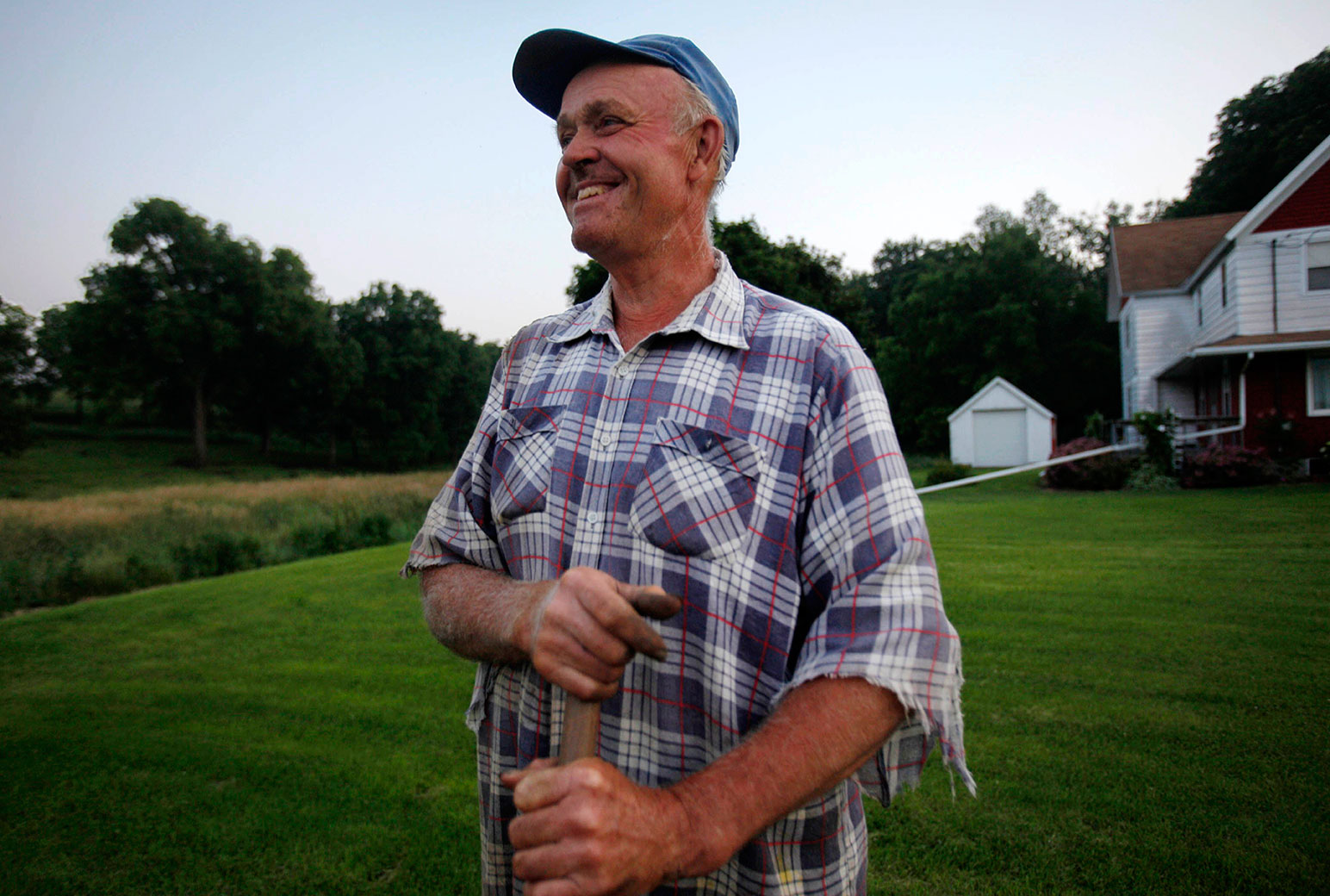
Jim Lamberty
That was my introduction to Jim Lamberty. When I showed up at the farm in early February 2010, I met Jims brother, Gordy, and their mother, Marie. On a later trip I met Gordys fiance, Vicky.
I visited the Lamberty farm on and off for more than two years. Most of my assignments at the paper were conceived by reporters and editors, but this was my project. These were my pictures. And, having grown up on a farm and in small towns, I felt these were my people. The project became a constant in my life through tumultuous stories like the 2011 labor protests in Madison and through anxious times of staff cutbacks at the newspaper. And it became a source of inspiration that made all of my photojournalism better.
Peoples lives are written on the fields of old farms.
The rows of the fields are like lines on a page, blank and white in winter, filled with each years story of happiness, disappointment, drought, rain, sun, scarcity, plenty. The chapters accumulate, and people enter and leave the narrative. Only the farm goes on.
Jim and Gordy Lamberty have farmed together every day of their adult lives on 180 acres their family calls Whistling Pines Farm, near the village of Pine Bluff, a tiny crossroads in western Dane County between Mount Horeb and Cross Plains. Less than fifteen minutes to the east is the city of Madison, the state capital.
The brothers lives follow the routine of twice-daily milking and the rhythm of the seasons. They milk forty Holstein cows and call them by name. Thelma stands next to Louise.
In the milking barn, few words pass between the two men as they move among the cows, feeding, cleaning, and connecting each one in turn to the milk pipeline. Words are unnecessary when you have worked together for decades. A radio plays country music and announces the weather report. The cows shift in their stalls, munching the hay and feed spread in front of them. The milking machine makes a soothing tick, tick, tick as it draws the milk from the cows into the pipeline and then into the big refrigerated bulk tank in the milk house attached to the barn. Every other day around 8:30 in the morning, Rick Edwards backs up his big truck to the barn and collects the milk from the tank. The Lamberty farm is just one stop on his route picking up milk from dairy farms and delivering it to Stockton Cheese, Inc., in Stockton, Illinois, where it is used to make natural aged Swiss cheese.
Milk in the morning. Milk at night. Feed cows and calves. Plant crops. Grind feed. Chop and bale hay. Cut wood. Clean the barn. Spread manure on the fields. Plow snow and split wood in winter. In the spring, gather the rocks that the frost has pushed to the surface of thawing fields. Cultivate corn. Pick corn. Harvest oats and barley. Help calves be born. Milk in the morning and milk at night.

The brothers prepare for evening milking.
It is a routine that has gone on here for decades. Most of the things that are important to my friends in the city and on Facebook, things that are worried over and debated, written about, satirized and analyzed, are not on the Lambertys radar. Here there is harmony and sweetness and things that need doing over and over every day. In the summer of 2012, I asked Gordy if he had seen any of the Republican National Convention on television that week. No, he repliedhe had given up following politics because it had become too bitter. It occurred to me that if our politicians have lost the attention of thoughtful, earnest people like this, we are in big trouble.
There are two things conspicuously absent from the Lamberty farm. One of them is leisure time. The days blend together in a pattern of physical work that begins before sunrise and ends after dark. Meals start with prayer and are taken between work. Breakfast is eaten when the morning milking is over and before the days fieldwork begins. Dinner is eaten when the fieldwork ends and before the evening milking begins. The farm, the animals and crops, are attended to and nurtured each day through the work. The farm provides food. And a way of life. On the occasions that I have walked into the empty barn when none of the Lambertys were around, it felt eerie and strange. Cows become accustomed to their people, and they lower their heads and look warily at strangers. This place has become accustomed to the Lambertys presence and care.
The other thing noticeably missing here is this: in all my visits to the farm over more than two years, I never heard a harsh word, never a word expressed in mean-spiritedness or anger.
Gordy explained:
For Mother and Dad, you worked together. You just worked together until you were done. A lot of operations dont succeed, but some do. And if you like what youre doing, you just do it. We both milk. We dont stick one with the milking and not the other. Were both there. When its chore time, we both quit in the field and come in [for milking].




